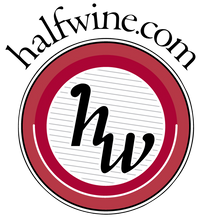Special order
Minimum quantity 6. Approximate price £20 per half.
Tasting notes
Everything we hope for in a Chablis - fresh, lemony and minerally to start and then opens up after half an hour to become fuller and richer. Goes well with hors d'oeuvres and subtly flavoured fish and white meat.
Why we recommend this wine
The William Fevre shop in Chablis is always our first stop (see our visit notes here) because to our minds they are a benchmark Chablis producer; there are a lot more expensive and a lot worse Chablis.
The wine
Domaine William Fèvre’s 46.8 hectares of vineyards sit on Kimmeridgian marls and clayey limestone subsoil and enjoy ideal exposures for the production of a very fine wine. The grapes are harvested manually and in the winery they use the principle of gravity so as to avoid all pumping, which could harm the quality of the wine. Brief (1½-2 hours) pneumatic pressing to obtain a gentle separation of the solid and liquid parts of the grape. The juice then has very light static settling to preserve enough fine lees so that the alcoholic and malolactic fermentations can occur naturally. The must is run into small stainless steel vats where it is matured for 10 to 12 months to preserve freshness. 5 to 10% of the harvest is vinified in old French oak barrels (6 years old on average) and matured there for 5 to 6 months.
The wine estate
Founded in 1959, over the years the domain has become one of the biggest land owners in Chablis with 51 hectares; 15.9 Premiers Crus and 15.2 Grand Crus. The domaine seemed to have lost its way and was viewed as underperforming for some time but the Henriot family from Champagne purchased the domaine in 1998 and its investment in the domaine has paid off handsomely in the quality it is now producing.
williamfevre.fr
Food and wine
White fish and meat; oysters, soft, rich white cheeses. Also see our guide to pairing food and wine here.
Did you know?
Chablis gets a lot of frost which can damage the new buds. To overcome the frost vineyards have a variety of approaches; light fires in braziers to warm the air; sprinkle fine mist to form ice over the buds and protect them that way; use large fans to blow the frost away.
Special order
Minimum quantity 6. Approximate price £20 per half.
Tasting notes
Everything we hope for in a Chablis - fresh, lemony and minerally to start and then opens up after half an hour to become fuller and richer. Goes well with hors d'oeuvres and subtly flavoured fish and white meat.
Why we recommend this wine
The William Fevre shop in Chablis is always our first stop (see our visit notes here) because to our minds they are a benchmark Chablis producer; there are a lot more expensive and a lot worse Chablis.
The wine
Domaine William Fèvre’s 46.8 hectares of vineyards sit on Kimmeridgian marls and clayey limestone subsoil and enjoy ideal exposures for the production of a very fine wine. The grapes are harvested manually and in the winery they use the principle of gravity so as to avoid all pumping, which could harm the quality of the wine. Brief (1½-2 hours) pneumatic pressing to obtain a gentle separation of the solid and liquid parts of the grape. The juice then has very light static settling to preserve enough fine lees so that the alcoholic and malolactic fermentations can occur naturally. The must is run into small stainless steel vats where it is matured for 10 to 12 months to preserve freshness. 5 to 10% of the harvest is vinified in old French oak barrels (6 years old on average) and matured there for 5 to 6 months.
The wine estate
Founded in 1959, over the years the domain has become one of the biggest land owners in Chablis with 51 hectares; 15.9 Premiers Crus and 15.2 Grand Crus. The domaine seemed to have lost its way and was viewed as underperforming for some time but the Henriot family from Champagne purchased the domaine in 1998 and its investment in the domaine has paid off handsomely in the quality it is now producing.
williamfevre.fr
Food and wine
White fish and meat; oysters, soft, rich white cheeses. Also see our guide to pairing food and wine here.
Did you know?
Chablis gets a lot of frost which can damage the new buds. To overcome the frost vineyards have a variety of approaches; light fires in braziers to warm the air; sprinkle fine mist to form ice over the buds and protect them that way; use large fans to blow the frost away.




